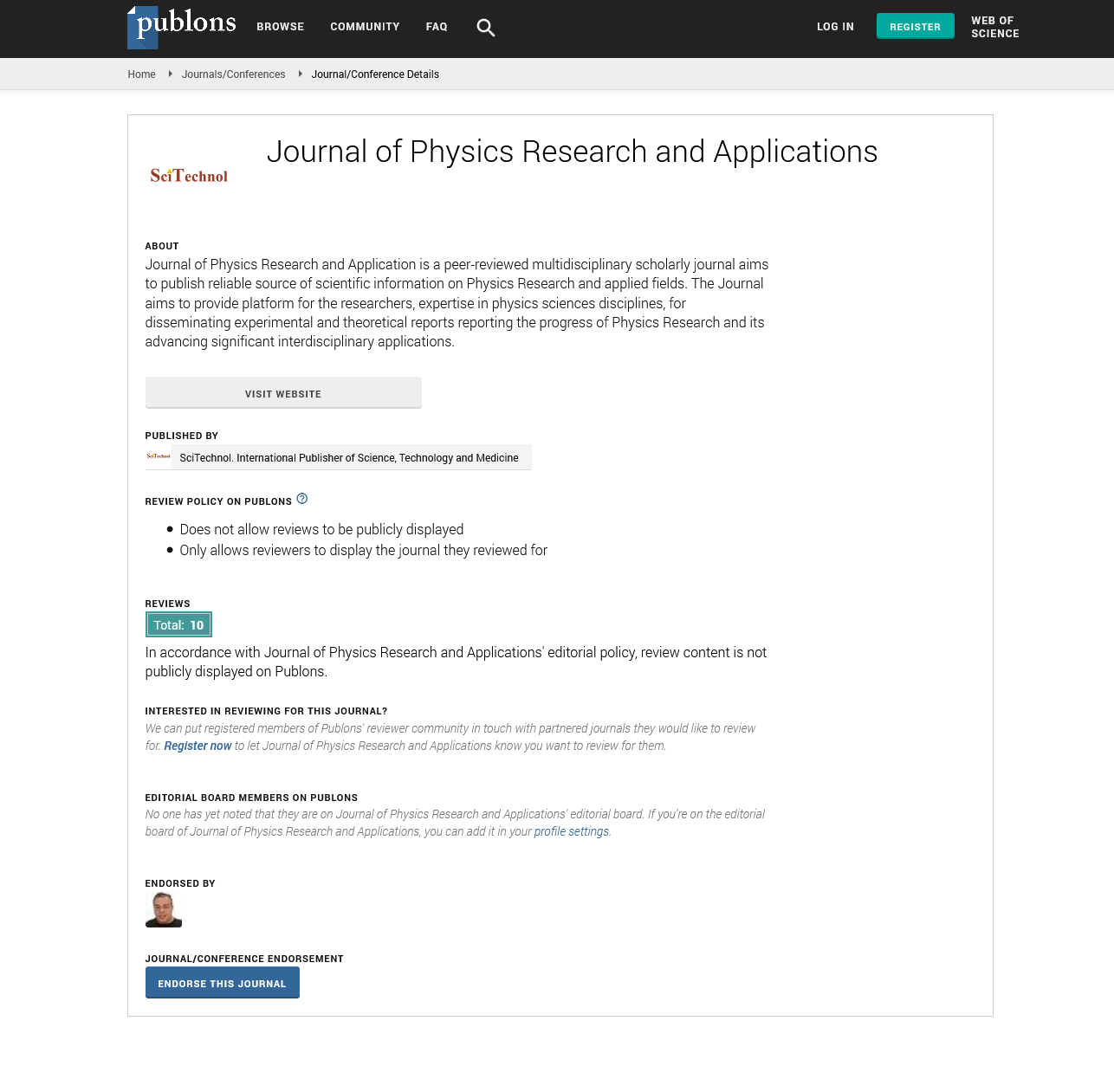Perception of the biological world
Johann Hohenegger
University of Vienna, Austria
: J Phys Res Appl
Abstract
Perception and recognition means the assignment of objects to specific classes. Objects defined by the primary character ‘life’ are named ‘organisms’. Organisms are grouped into classes called ‘species’ according to homogeneities in shape and organization. Several species concepts have been developed. Like organisms, species are ‘individuals’ because being entities restricted in time (by originating and ending) and by space. A general explorative species definition must be used in the studies on evolution, phylogeny, ecology, biodiversity and biogeography. Species as evolutionary units show different forms of speciation. Measures for diversities used in ecology and biodiversity must be based on a general species concept otherwise apples will be mixed with oranges. Grouping of species into classes with decreasing character homogeneities leads to nested hierarchical class systems. Introduced by Carolus Linnaeus together with the binomial naming, two classification systems require representing the ‘natural system’. The phonetic system is a nested hierarchy of fixed classes called ‘categories’, named ‘genus’, ‘family’, ‘order’, ‘class’, ‘phylum’, ‘kingdom’ and ‘domain’. This ‘evolutionary system’ cannot directly show phylogenetic lineages due to different evolutionary rates within categorial classes. Furthermore, the fixed categories are arbitrary due to inconsistencies in the defining character sets. The phylogenetic system strictly reflects phylogenetic relations. Initially based on morphological characters weighted by apomorphies (novel evolutionary traits), molecular genetic sequences are used today. Both methods result in nested hierarchies named ‘phyletic systems’. The underlying phylogenetic system, which is an exclusive hierarchy with branching points becoming objects (species), cannot be reconstructed explicitly. Natural categories can be detected in nested hierarchies based on inconstancies in class building rates when identical character sets are used. Only the genus category with the lowest inconstant heterogeneity grade in monophyletic groups can represent a natural category. This is important for a consistent intersubjective identification of species by the binomen.
Biography
Johann Hohenegger is a retired Professor at the Department of Paleontology, Vienna University, Austria, where he got his undergraduate and postgraduate degrees. He is the author with more than 150 publications are focused on population dynamics, taphonomy and carbonate production of larger foraminifera, recognition of species in the present and past, morphometric, morphogenetic programs and their phylogenetic implication in comparison to molecular genetic trees, morphocoenoclines along environmental gradients and their importance to decipher paleoenvironmental conditions, integrated stratigraphy and paleoenvironmental analysis in the Neogene of the Para Tethys (Central Europe) concentrating on astronomic cycles and spatial distributions on micro- and macroscale. He stayed for long time in Japan working at the Sesoko Marine Laboratory of the Ryukyu University, at the Kagoshima University and at the Kyoto University Museum. At Vienna University, he has been leading basic courses for earth- science students in geostatistics, biology, micropaleontology and biostratigraphy.
E-mail: johann.hohenegger@univie.ac.at
 Spanish
Spanish  Chinese
Chinese  Russian
Russian  German
German  French
French  Japanese
Japanese  Portuguese
Portuguese  Hindi
Hindi 
